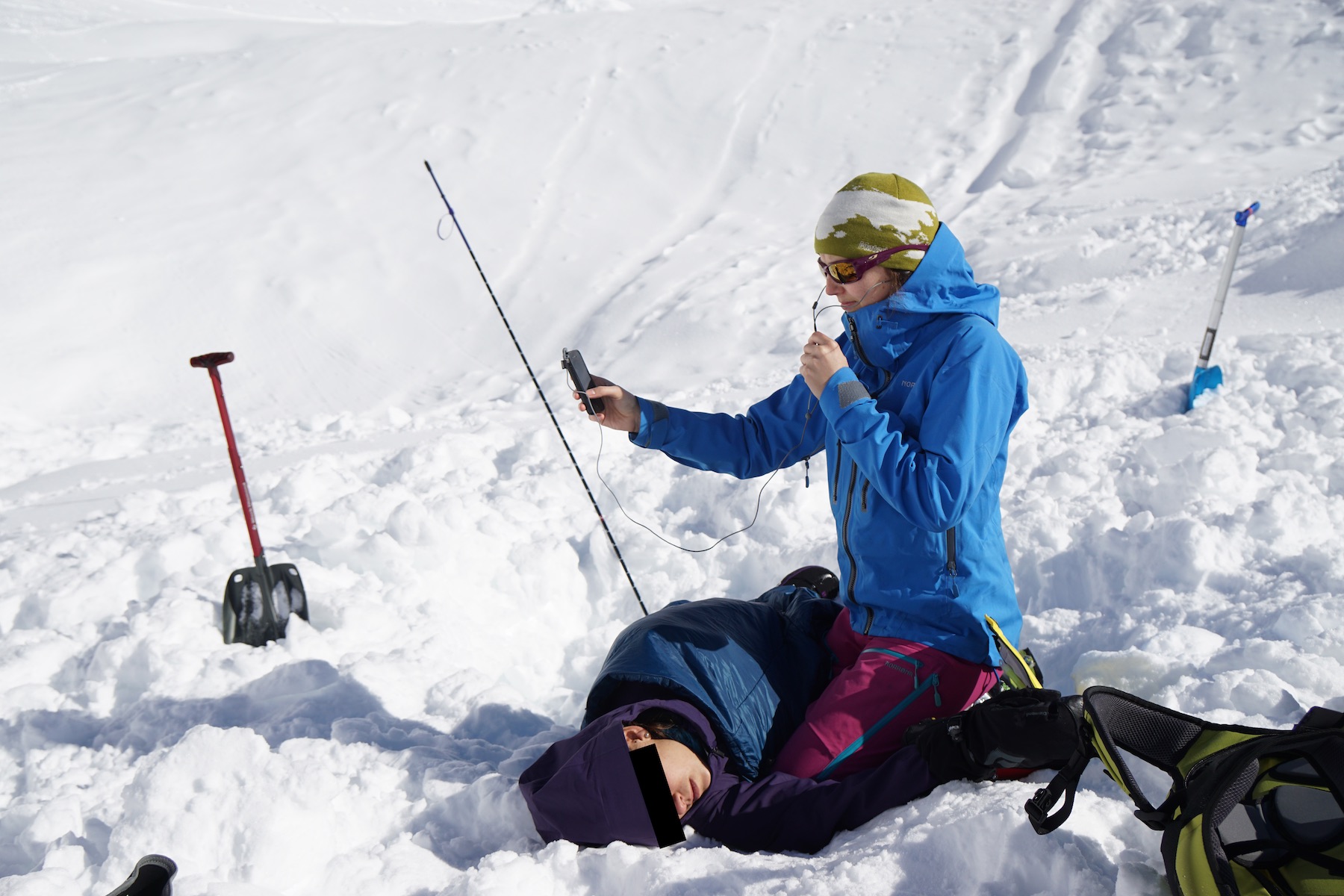
First aid in an emergency situation
First aid for injured persons is based on the priority principle. One of the most important measures, and one that everyone should and can take, is to call for professional
16.07.2025
As soon as the first snow falls, the motto is: grab your skis or board and make the first tracks of the season in the snow on the glacier or in the backcountry. Those who have their equipment to hand and don’t have to think about whether everything is working properly have an advantage. This applies to all ski and snowboard equipment – the right time to check your equipment is before the actual start of winter.
Whether the edges are rust-free, the base is prepared and the skins are sticky is relevant for the first excursion into wintry terrain. From the very first day, however, it is also important to always carry the complete emergency equipment with you, fully functional and well maintained.
You can relax if you sent them off for their summer break correctly after last winter, i.e. removed all batteries and checked the emergency equipment and updated it if necessary. Those who did not do this can be a little less relaxed … and must now take care to check the following things:
Ideally, a freeride day should be planned with the whole group. Everyone involved should know all the information about the planned project and start the (next) day with the same knowledge.
The first step is to check whether the batteries in the avalanche transceiver are intact, i.e. have not leaked – otherwise the device would have to be sent in. Even if you are lucky, it is still better to remove the batteries from the device over the next summer. In any case, new high-quality batteries are inserted into the avalanche transceiver.
When closing the battery compartment, it – and all other mechanical or moving parts of the avalanche transceiver and the carrying system – are checked for cracks or other damage.
Then check all the functions of the avalanche transceiver (with the help of the app if necessary) and remind yourself of the menu items and operation.
You should then check whether the avalanche transceiver is running with the latest software using the app, on the homepage or in the specialist store and update it if necessary.

Take it in your hand, check that nothing is broken or bent, assemble, disassemble, maintain if necessary (e.g. with silicone spray) and stow in the emergency compartment of the rucksack.
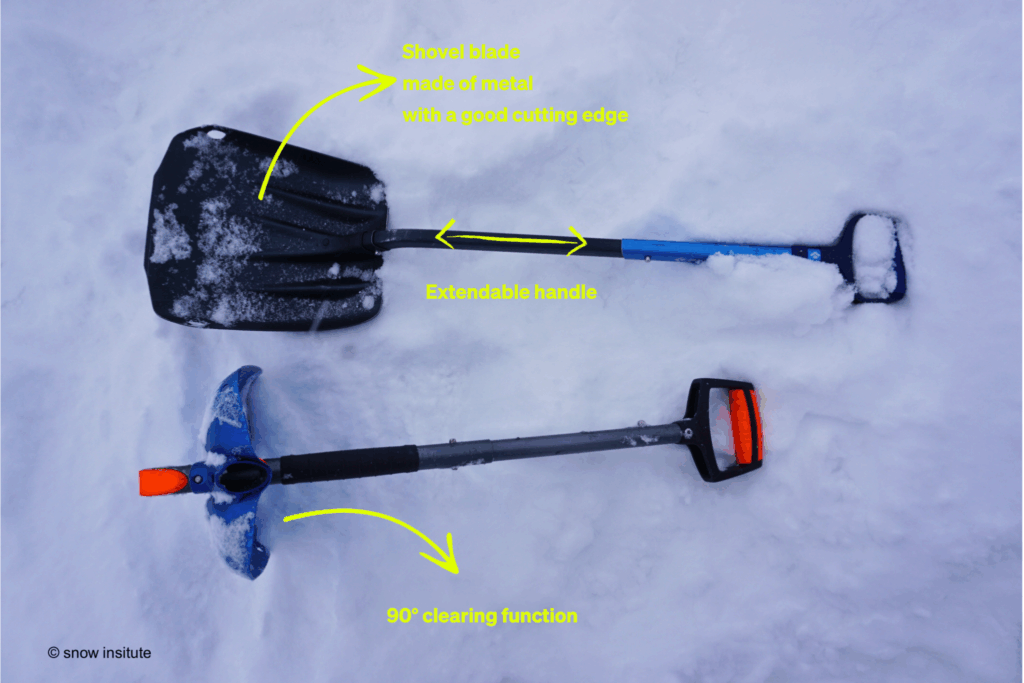
As with the bucket, all parts are checked, the probe is assembled for testing and it is also necessary to check whether the tension of the probe is correct or whether the cable pull needs to be readjusted.
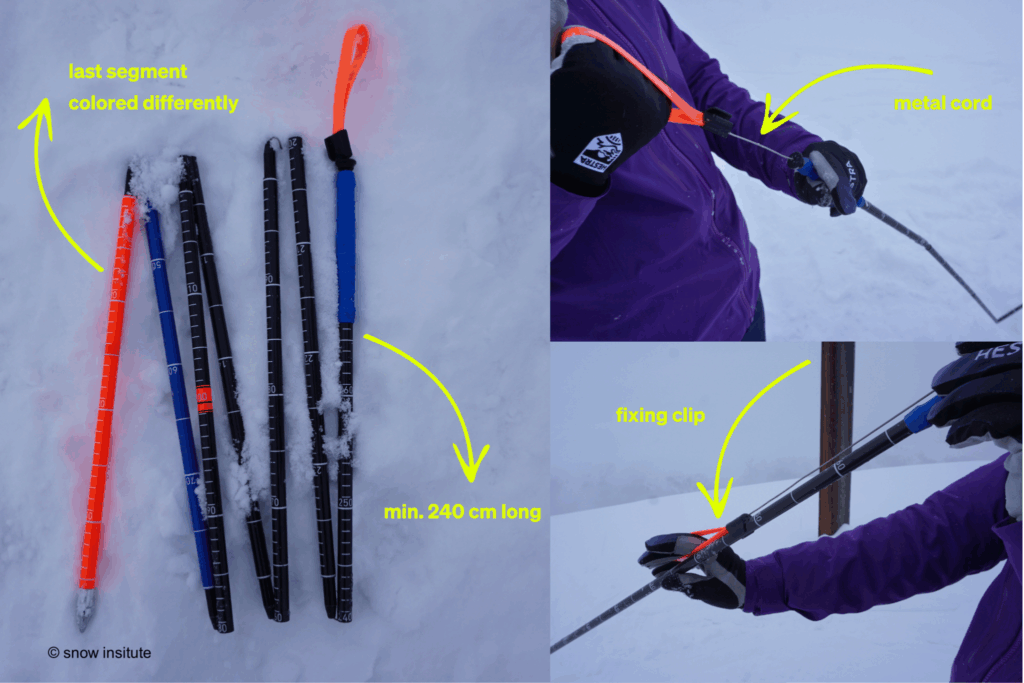
As with other equipment, we recommend a complete check of the avalanche airbag backpack before the start of the season, including its operation – which also includes a test activation. Only then do you know that the system is actually functional!
Depending on the avalanche airbag system, this is more or less complex: The electric “blower systems” are simply charged, triggered, drained and stowed away. If necessary, charge the battery or capacitor at the same time and insert new batteries for the capacitor systems. The same is done with the classic systems with cartridges, except that a new full cartridge or cartridges must be inserted and the used ones replaced. If your avalanche airbag comes with a deployment test tool, then you can save yourself the trouble of a “real” deployment – a specialist dealer or the instruction manual will also tell you this. A second full set of cartridges should always be to hand during the season anyway.
How the batteries of the electrical systems are correctly stored, charged, etc. can play a role in their service life and the instructions in the operating instructions must be followed.
Before the winter season, it is worth checking the contents of the first aid kit and replacing expired or used material. Possibly add a heat pack. If you also keep a small headlamp, check the batteries and replace them if necessary.
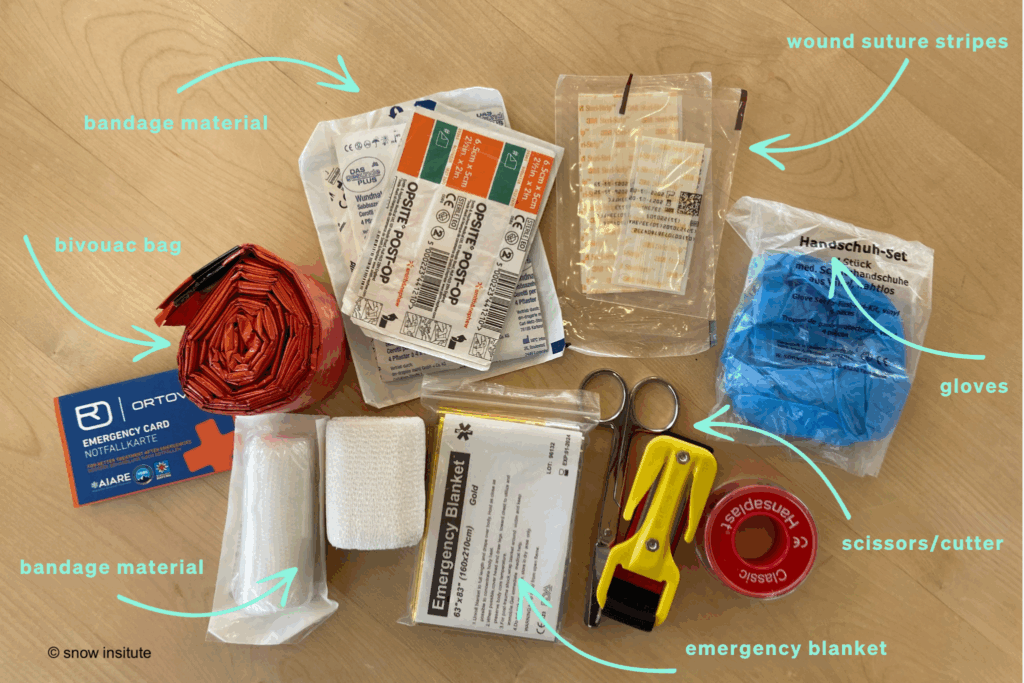
Unpack briefly, check that nothing is moldy or damaged, and put it back in the backpack.
Some of the other emergency equipment will also be used in everyday life – e.g. the smartphone – or it depends on your personal preferences what you take with you on a ski tour or when freeriding. In any case, prepare and pack a helmet, spare battery pack, Recco reflectors, radio or satellite messenger accordingly.

First aid for injured persons is based on the priority principle. One of the most important measures, and one that everyone should and can take, is to call for professional

Orientation problems due to poor visibility, the failure of an important piece of equipment during a variant descent in a remote area or an injury: sometimes situations arise in which

As soon as the first snow falls, the motto is: grab your skis or board and make the first tracks of the season in the snow on the glacier or

More than half of all people involved in avalanche incidents suffer no or only minor injuries. Around 32 percent of the people involved suffer serious injuries, while the fatality rate

The secured ski area includes ski slopes and ski routes that are prepared and protected from alpine dangers by the ski area operator.

As soon as the first snow falls, the motto is: grab your skis or board and make the first tracks of the season in the snow on the glacier or in the backcountry. Those who
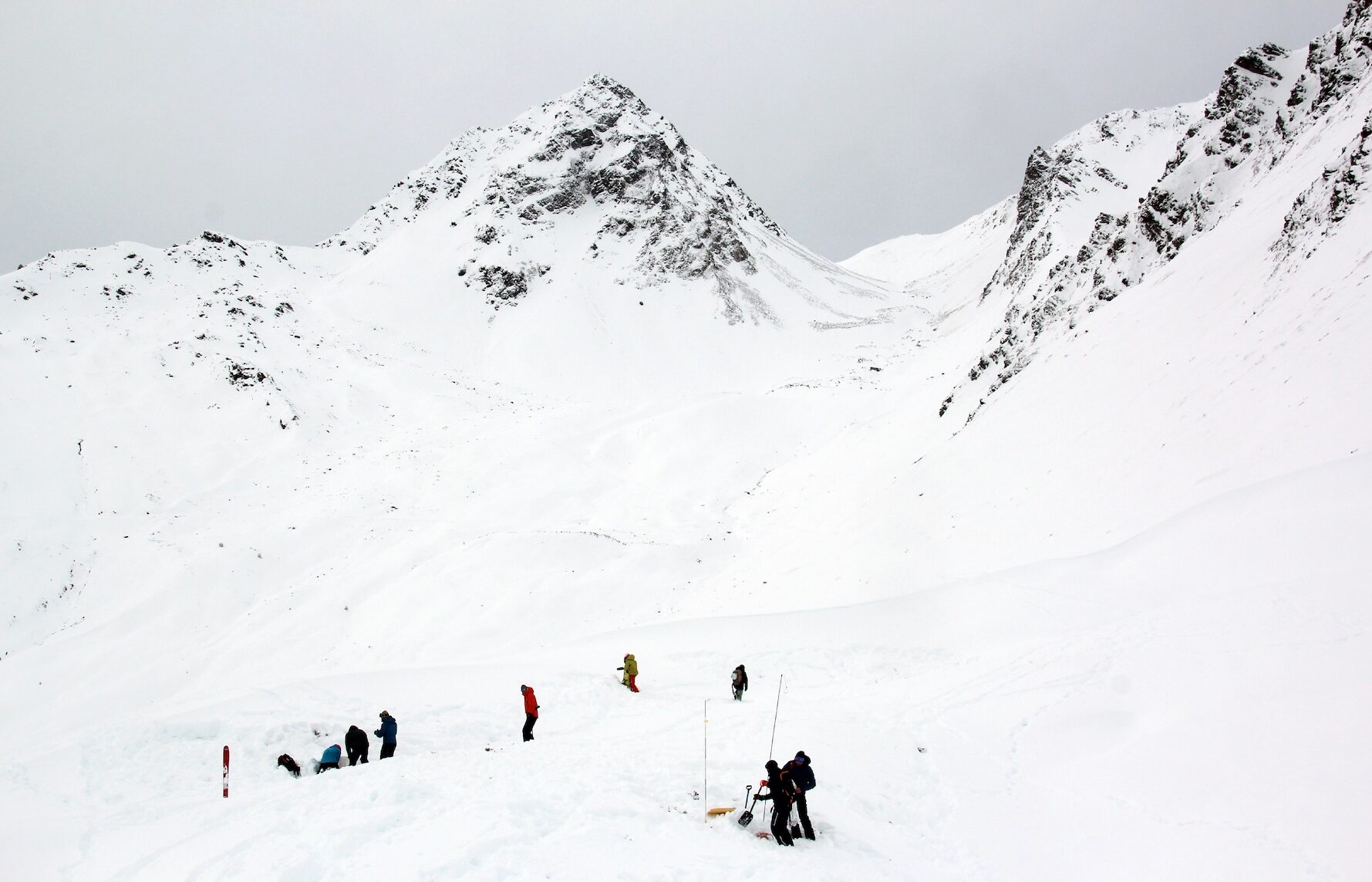
More than half of all people involved in avalanche incidents suffer no or only minor injuries. Around 32 percent of the people involved are seriously injured, and the death rate of people who are buried (regardless of the burial depth) is around 13 percent.

Snow is a form of frozen water. It consists of many small ice crystals that form into snowflakes.
Topics
Legal information
All graphics, images and texts on the entire site may be downloaded and used in accordance with our rights of use.